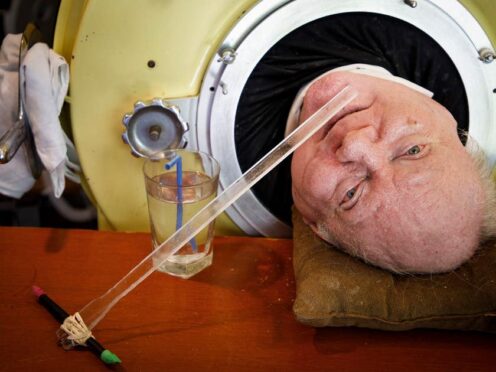
A Texas man who spent more than 70 years using an iron lung after contracting polio in the 1940s has died.
Paul Alexander, 78, died on Monday at a Dallas hospital, said Daniel Spinks, a long-time friend.
He said Mr Alexander had recently been hospitalised after being diagnosed with Covid-19 but did not know the cause of death.
Mr Alexander was six years old when he began using an iron lung, a cylinder that encased his body as the air pressure in the chamber forced air into and out of his lungs.

In recent years he had millions of views on his TikTok account called Conversations With Paul.
“He loved to laugh,” Mr Spinks said. “He was just one of the bright stars of this world.”
Mr Spinks said Mr Alexander’s positivity had a profound effect on those around him. “Being around Paul was an enlightenment in so many ways,” Mr Spinks said.
He said he would drive Mr Alexander, who was paralysed from the neck down, to the courthouse, and then push him to his court proceedings in his wheelchair.
He said that at that time, Mr Alexander could spend about four to six hours outside of an iron lung, and would be in an iron lung when he was at his office or home.
Mr Spinks said that Mr Alexander had learned how to “gulp air down his lungs” in order to be out of the iron lung for part of the day.
“As he got older he had more difficulties in breathing outside the lung for periods of time so he really just retired back to the lung,” Mr Spinks said.
Mr Alexander told The Dallas Morning News in 2018 that he was powered by faith, and that what drove his motivation to succeed was his late parents, whom he called “magical” and “extraordinary souls”.
“They just loved me,” he told the newspaper.
“They said, ‘You can do anything’. And I believed it.”
The newspaper reported that Mr Alexander operated a plastic implement in his mouth to write emails and answer the phone.
He earned a bachelor’s degree in economics from the University of Texas in 1978 and a law degree from the school in 1984.
Polio was once one of the nation’s most feared diseases, with annual outbreaks causing thousands of cases of paralysis. The disease mostly affects children.
Vaccines became available starting in 1955, and a national vaccination campaign cut the annual number of US cases to less than 100 in the 1960s and fewer than 10 in the 1970s, according to the Centres for Disease Control and Prevention.
In 1979, polio was declared eliminated in the US, meaning it was no longer routinely spread.

Enjoy the convenience of having The Sunday Post delivered as a digital ePaper straight to your smartphone, tablet or computer.
Subscribe for only £5.49 a month and enjoy all the benefits of the printed paper as a digital replica.
Subscribe